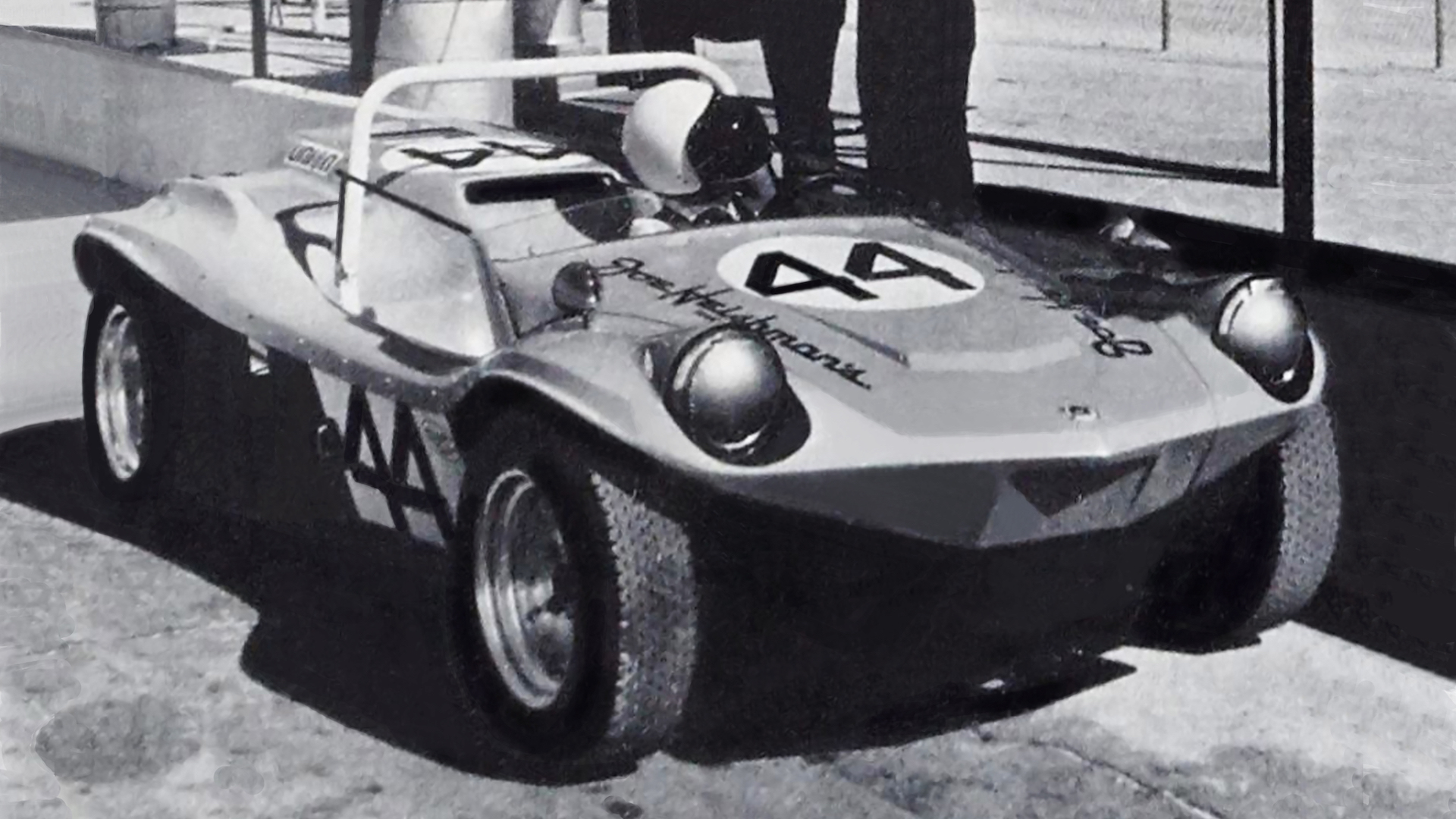

There are some things you never expect to see on a racetrack, like a Volkswagen Type 2 bus that drives on its side, or a rolling confluence of internet memes and pyramid schemes. Or, for that matter, a VW-based dune buggy, which is more at home off-road than on a road course. Even so, that didn’t stop a group of privateers from entering a dune buggy in the 1970 24 Hours of Daytona as a joke, only to qualify for the race and be granted permission to start. They would’ve made the green flag, too, had it not been for an unfortunate encounter with Porsche.
1970’s Daytona 24 is most noted for being the debut race for the Ferrari 512 S, Maranello’s counter to the Porsche 917K. The seriousness with which the two makes approached the race was matched only by the flippancy of Virginian Porsche and Volkswagen dealer Hugh Heishman, who entered a dune buggy into the race “as a novelty.”

Lou Galanos, who took the photo of the car up top and has previously written about the event for Sports Car Digest, tells us Heishman’s car was built in collaboration with Dearborn Automobile Company, which produced Formula Vee cars (air-cooled VW-powered open-wheelers), and which supplied the “Deserter” buggy kit that’d give his race car its name: Deserter GS Volkswagen. Unlike most such buggies, which are often based on the chassis of VW Type 1 Beetles, the Deserter GS was effectively a tube-framed Formula Vee car with a dune buggy’s body. It was essentially a dressed-up open-wheel racer.
They were advertised as being compatible with the air-cooled flat-sixes of the Chevrolet Corvair, though the Daytona car was powered by a more pedestrian VW engine; a 1.7-liter flat-four that depending on specification could have produced 68 to 80 horsepower. Going by the Deserter GS’s stated weight of 1,100 pounds with the flat-six in it, it stands to reason the Daytona Deserter had a power-to-weight ratio between 110 and 160 horsepower per ton; well above the less than 100 some competing sports cars showed up with. Even so, it was by no means worthy of being classified alongside the front-running Porsches in the prototype class, where it landed apparently due to its hand-built construction.


Heishman had his car driven by a trio of employees at his dealership, all of whom had competitive racing experience. There was Steve Pieper, an open-wheel racer who contested the prior year’s Daytona 24, and who had on at least four occasions competed alongside teammate Jim McDaniel, an SCCA Trans Am driver. Then there was Jon Krogsund, an IMSA GT driver, who like everyone behind the wheel of slower cars at Daytona is said to have been told to “stay in your lane lest you get a Porsche enema.” This would turn out to be almost prophetic, as Krogsund would learn during Wednesday practice before the race.
Krogsund was running practice laps when the team to beat, Gulf Oil-backed JW Automotive, sent out its Porsche 917K practice car (or T-car) with Formula One Grand Prix-winning Jo Siffert (who also helped film Steve McQueen’s Le Mans) at the helm. According to an eyewitness account, Siffert would intercept the strange, buggy-bodied prototype early on his second practice lap, entering turn three on Daytona’s infield section. Krogsund is said to have held his line exiting the corner, and when Siffert attempted to pass on the straight into the dogleg turn four, the two cars made contact.



The VW wasn’t seriously damaged, limping back to the pits with a bent wheel but an intact fiberglass body. The Porsche, on the other hand, wasn’t so fortunate. It sustained damage to the left rear wheel, which deflated the tire, and was later discovered to have damaged suspension—it would be towed into the pits and not return to the track all weekend. JW Automotive was furious and filed a complaint with the race stewards about the car and its driver, alleging “the drivers in the buggy were all over the road,” according to the April 1970 issue of Sports Car Graphic.
Organizers investigated, and after interviewing witnesses came to a less damning conclusion: It was a racing incident. The Deserter GS was clear to start the race, but it wouldn’t make the green flag regardless. Not because of the race organizers, or Porsche, but because Heishman—who dealt Porsches—didn’t want the snafu impacting his livelihood, and withdrew the car.
“I was a Porsche/VW dealer and I didn’t need any headaches associated with my business partners,” Heishman later recalled. “I didn’t want to be accused of causing Porsche any more grief.”
In the end, Heishman deserted Daytona, and even though his driver was cleared of fault, he and the other slower entries got what Porsche would’ve considered just. At the last minute before the 1971 race, teams that couldn’t qualify average above 93 mph in qualifying were reportedly barred from starting, effectively banning slower, grassroots entries. Even though the Deserter GS never actually competed, it still seems to have left its mark on the face of endurance racing at Daytona.
Got a tip or question for the author? You can reach them here: james@thedrive.com